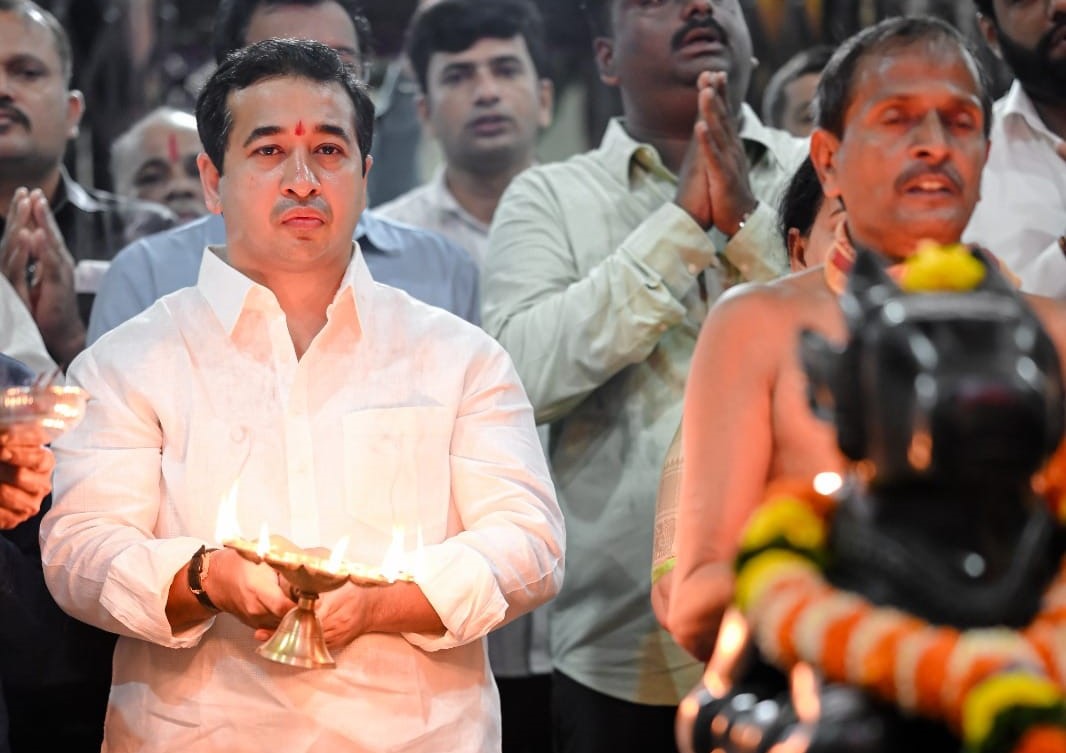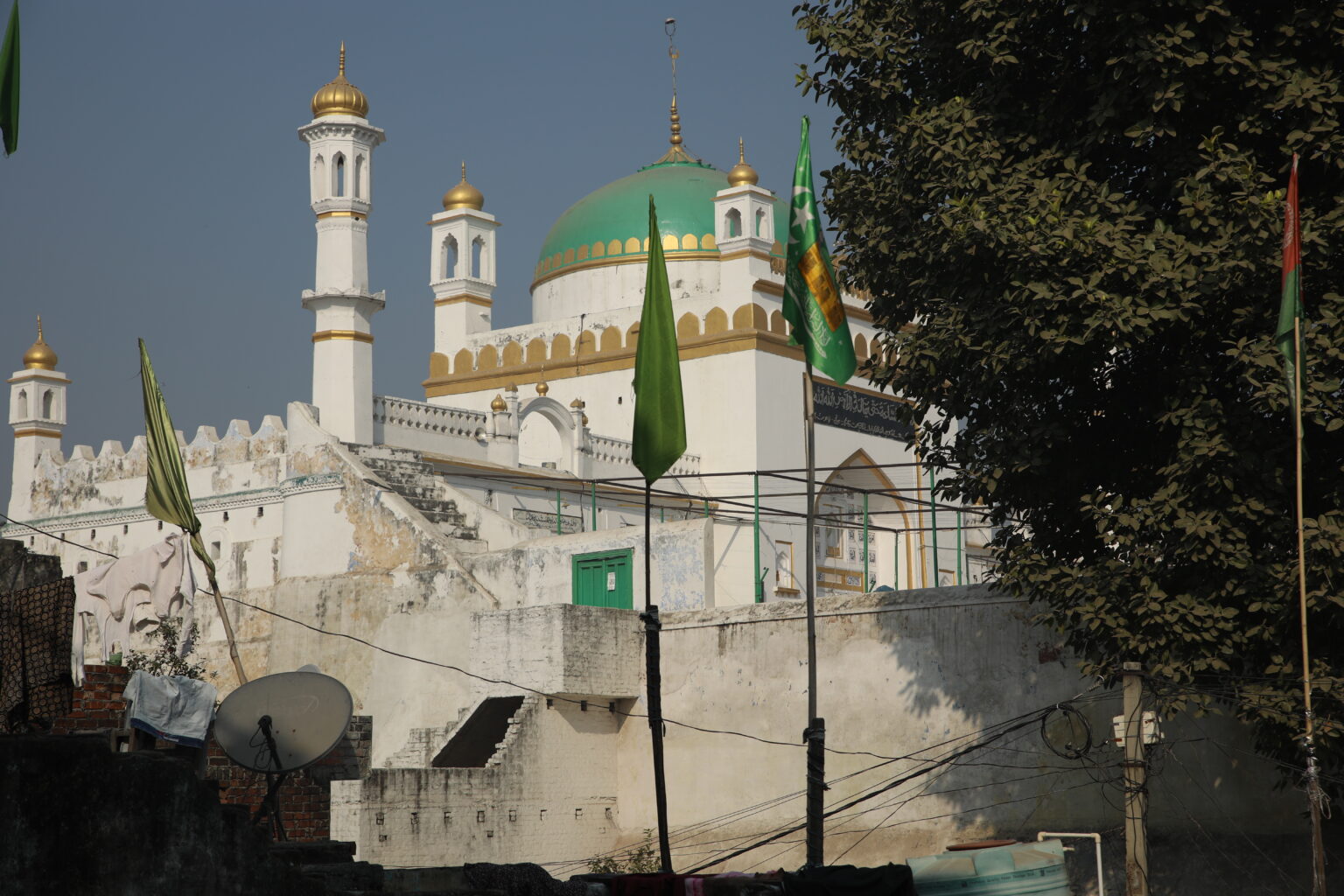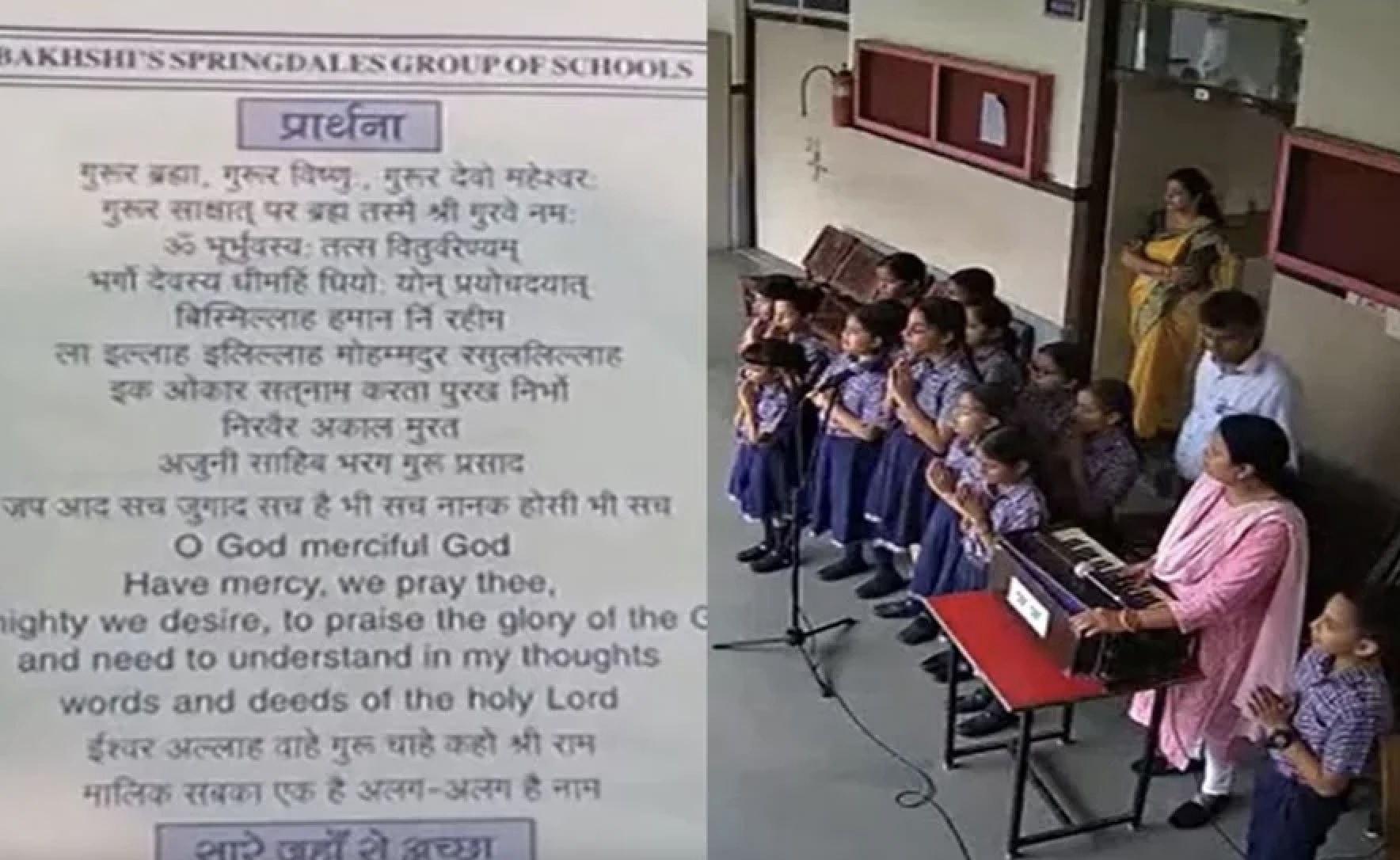
Delhi: Over the last week, the country witnessed four sets of views that have a bearing on the future of sedition: the attorney general, the solicitor general, the ministry of home affairs and the Supreme Court.
On 5 May 2022, the attorney general orally submitted before the court that Kedar Nath Singh vs State of Bihar (1962), which upheld the validity of the sedition law, is good law and that sedition can remain in the statute books. He also brought up a recent case filed against Navneet Rana and Ravi Rana for chanting the Hanuman Chalisa, as an instance of misuse of the law, and therefore guidelines could be laid down to prevent this kind of misuse.
On 7 May 2022, the solicitor general, in his written submissions, which mirrored that of the attorney general, urged that Section 124A not be reconsidered and further that individual instances of misuse are not a ground to invalidate the provision.
However, on 9 May 2022, the additional secretary to the government of India, ministry of home affairs filed an affidavit before the Supreme Court stating that “the Hon’ble PM believes that at a time when our nation is marking ‘Azadi Ka Amrit Mahotsav’ (75 years since independence) we need to, as a nation, work even harder to shed colonial baggage that has passed its utility, which includes outdated colonial laws and practices.” The affidavit urged the court to “not invest time in examining the validity of sedition once again” and wait for the Executive to reconsider the provision before an “appropriate forum”.
On 11 May 2022, the Supreme Court passed an order that said, “it is clear that the Union of India agrees with the prima facie opinion expressed by this Court that the rigours of Section 124A of IPC is not in tune with the current social milieu, and was intended for a time when this country was under the colonial regime.” The apex court went on to say that they “hope and expect that the State and Central Governments will restrain from registering any FIR, continuing any investigation or taking any coercive measures by invoking Section 124A of IPC while the aforesaid provision of law is under consideration.” It also stated that the Union of India may issue a directive to the State Governments/Union Territories to prevent any misuse of Section 124A of IPC.
What do these events between 5 May 2022 and 11 May 2022, mean for sedition in India, and what does the future look like for those accused of sedition?
The net around sedition has been cast so wide over the last six years, as to defy all judicial reasoning and logic, an issue finally being addressed by the Supreme Court since its only clarifications 59 and 26 years ago.
Hopes And Expectations From The Government
More than 500 cases of sedition were filed since the BJP came into power in 2014 and 2019. We documented a 28% increase in the number of sedition cases filed each year between 2014 and 2020, Modi’s time in office, compared to the yearly average between 2010 and 2014, under the UPA II administration.
Cricket matches between India and Pakistan were particularly contentious: three sedition cases were filed in 2014, 2017 and 2021, against people allegedly “celebrating” India’s losses over Pakistan in the Asia Cup, the ICC Champions Trophy and the Twenty20 World Cup matches. Adityanath publicly announced that sedition cases would be filed against anyone celebrating Pakistan’s victory.
That the Supreme Court “hopes” for the government not to file FIRs invoking sedition, is, therefore, a misplaced sentiment in this political climate. Soon after this order, the law minister, Kiren Rijiju, said that while he respected the court, there is a “lakshman rekha” that cannot be crossed. Public statements such as these only reiterate the vagueness that already exists around sedition, and consequently how the police may interpret this provision.
As Aparna Chandra, member of the Editorial Board at Article 14 says, “past experience shows that provisions such as 66A of the Information Technology Act, 2000 were struck down entirely by the Supreme Court but are continuing to be used. In this background, the Supreme Court should have directed or ordered the government not to file FIRs under sedition, instead of merely urging them not to do so.”
How The Police Have Invoked Sedition
Our investigation revealed that in two police stations in central Karnataka, where five sedition cases were filed, policemen said it was their “duty” to ensure that anti-India messages are curbed in a “strict” manner. Article 14 attempted to ask police investigators in many of these cases how they arrived at the decision to slap sedition charges for social media posts.
“These messages had been circulating among villagers and it was causing some distress. We had to take action,” said a mid-level official at one of the stations. He was involved in ‘investigations’ into three sedition cases. He said there was “a lot of josh” and anger among people after the Pulwama attack. “We didn’t want these kinds of pro-Pakistan messages to be sent or left unpunished.”
There was a brief discussion with the police department on the kind of case to be filed, the officer said.
Eventually, it was “agreed” that pro-Pakistan messages attracted a sedition charge. Asked about the Supreme Court rulings on the filing of sedition cases in accordance with Kedar Nath Singh Vs. State of Bihar, a police officer replied: “Let the courts decide if they are innocent or guilty of sedition. It is our job to file cases if there is a complaint.
In one case, the police filed a sedition case against a 28-year-old shepherd who had studied till Class III. He had “confessed” to uploading the photo of Pakistani soldiers as he “liked Pakistan”. However, when Article 14 visited the police station, officials conceded that it was likely an accidental post as Basava was “naïve” and “technologically illiterate”.
Basava spent four months in jail on a sedition charge that should not have been filed in the first place.
Our investigative reportage from Uttar Pradesh also reveals another kind of threat from right-wing Hindu groups and the police.
An electrician with a small shop in Nautanwa market, Feroz Ahmad, then 36, was arrested on 9 November 2018 and charged with sedition. Police accused him of forwarding a WhatsApp message, which the men of the Hindu Yuva Vahini, a right-wing organisation established and nurtured by UP chief minister Yogi Adityanath, claimed had hurt the religious sentiments of Hindus.
“His intention is to incite communal riots in the country by hurting the religious sentiment of majority Hindus,” said the first information report (FIR), the starting point of a police investigation. “He wants to cause communal flare-up with the objective of destabilising the government and damaging the unity and integrity of the country.”
Ahmad remembered that the Hindu Yuva Vahini men had virtually dictated to the policeman sitting at a desk and writing the FIR the sections of Indian Penal Code, 1860, that were to be slapped on him.
Narasingh Pandey, district president of the organisation and the formal complainant in the case, was at the helm. A senior police officer in Maharajganj who was acquainted with the case admitted that it was a mistake to apply section 124A (sedition) of the IPC in the case against Ahmad. “When the investigation was done and we realised that a mistake had been committed, the section was dropped immediately,” he told Article 14, speaking on condition of anonymity.
All the policemen who filed the case against Ahmad at Nautanwa police station were since transferred.
The Hindu Yuva Vahini’s Maharajganj district president Narasingh Pandey was unrepentant. He told Article 14 that his complaint was legitimate, and that he was driven not by any prejudice but solely by “nationalist instincts”.
“One of my duties as a leader of the Hindu Yuva Vahini is to file complaints with the police against those who speak or write against our gods and goddesses or our Maharaj-ji (the honorific commonly used to refer to Adityanath) or any other Hindu religious guru,” he said. This included those who posted these opinions on social media, he added.
In Chitrakoot, a district on the state’s southern border with Madhya Pradesh, Meera Bharati, 30, and Mohit Patel, 23, were arrested for sedition on 2 October 2020, a day after an FIR was registered on the complaint of a local BJP leader identified in the complaint as “Pankaj Tiwari, booth president of the BJP”.
Bharati, a lawyer by training and belonging to a Scheduled Caste, and Patel, a technical college student belonging to an OBC community, allegedly used “abusive language” for Modi and Adityanath, the FIR said. It said the two had claimed that “the prime minister and the chief minister were responsible for the spread of Corona pandemic”, and that their statements were not in national interest.
The fact that private complainants also pressure the police to file sedition cases cannot be ignored. Our data show that in 32 cases against more than 200 accused persons, complainants other than investigating agencies approached the police to file sedition cases.
Guidelines Exist, Do Not Work
In 1962, the Supreme Court in Kedar Nath Singh Vs. State of Bihar (1962) read down section 124A, and held that only insofar as a speech tended to incite public disorder and therefore, stability of the state, it would constitute an offence under sedition.
The court reaffirmed this position in Balwant Singh & Another Vs. State of Punjab (1995). However, the Kedar Nath Singh judgment did not clarify who decides whether there was an incitement to violence. Even when general guidelines exist, the police continue to file sedition cases without procedure.
Arnesh Kumar Vs. State Of Bihar & Another (2014) requires that a magistrate record in writing that a prima facie case is made out against an accused before ordering a detention or an arrest. However, an investigation by the Indian Express found that in 25 arrests in Uttar Pradesh, Karnataka and Assam over protests against the Citizenship Amendment Act (CAA) 2019, the remand orders showed that this question was not addressed.
Another guideline regulating the use of sedition is Section 196 of the Code of Criminal Procedure (CrPC). It states that “no court shall take cognizance of any offence punishable under Chapter VI” of the IPC except with the previous sanction of the union or state government.
The government is expected to apply its mind to the materials provided by the investigating agencies, based on which it may or may not grant sanction to proceed with a trial. Since considerable public resources are invested in a trial process, Section 196 is a crucial opportunity for the government to weigh its legal options.
The government is expected to apply its mind to the materials provided by the investigating agencies, based on which it may or may not grant sanction to proceed with a trial. Since considerable public resources are invested in a trial process, Section 196 is a crucial opportunity for the government to weigh its legal options.
On 28 February 2020, the government of Delhi granted sanction to prosecute Kanhaiya Kumar and others in a case where they were accused of raising slogans. Slogan raising alone is not seditious, an interpretation already affirmed by the Supreme Court in Balwant Singh and Anr vs State of Punjab (1995).
It is not only the police, even lower courts do not apply their mind as an order by a district judge in Karnataka shows. In an order denying bail to an 18 year old, first year B.A. student who was accused of uploading a WhatsApp status with a photo of an Indian flag and a half moon, the judge stated “It is to be noted that the petitioner is the unscrupulous man who living under the mercy of our nation utilizing all the amenities provided by our tax payers for free, in-spite of that he had deep love to the enemy country. This kind of people should be deported to their loved country. Added to that behind these kind of gaddar an organized system is activate. If this petitioner is released on bail, it will boost the morality of the said gaddars.”
He spent more than 60 days in prison before he was released on bail.
Politically Motivated Use of Sedition
With the victory of the BJP and Prime Minister Narendra Modi in May 2014, there was a distinct uptick in not just the number of cases filed but the kind of cases filed.
In August 2014, two months after the BJP came into power, seven people in Kerala were charged with sedition for not standing up for the national anthem. Three months later, 10 schoolboys were arrested in Kushinagar, UP, for wearing t-shirts of the Pakistan cricket team during a Muharram procession.
From then on, these were the kinds of cases that attracted sedition charges: An open letter on mob lynching, a remark about the Taliban takeover, calling the Lakshadweep administrator Praful Patel of the BJP a “bio weapon”, asking for ventilators in a Ludhiana hospital to combat the COVID-19 pandemic, “celebrating” the Pulwama bombings, protests around legislations (the Citizenship Amendment Act and new farm laws), and even cases filed in the aftermath of a gang rape in Hathras for “defaming” the Adityanath government in UP.
The manner in which Section 124A is written in the statute books leaves the net wide open for political weaponisation. It punishes a person for bringing or attempting to bring hatred, contempt and disaffection towards the Government established by law. The section goes on to say that the expression “disaffection” includes disloyalty and all feelings of enmity.
To expect that sedition can therefore be regulated by guidelines to prevent misuse, as the attorney general argued, ignores the social and political realities of our present times.
What Of Pending Sedition Cases?
The Court also ordered that all pending trials, appeals and proceedings with respect to the charge framed under Section 124A of IPC be kept in abeyance. Importantly, however, adjudication with respect to other Sections could proceed.
Therefore, since the court has temporarily stayed Section 124-A, any person accused of sedition along with other provisions in the Indian Penal Code or other statutes such as the Unlawful Activities Prevention Act may continue to be in prison, may be denied bail, the investigation against them can proceed, charges may still be framed, and trial may proceed.
Our data show that FIRs routinely invoke other laws along with Section 124-A.
In more than 60% of cases over 10 years, a variety of other laws, such as the Unlawful Activities Prevention Act, 1967, the Information Technology Act, 2000, Arms Act, 1969, and the Criminal Law Amendment Act were added to the first information reports (FIRs). The data also found a sharp rise after 2018 of cases where section 153-A of the IPC was invoked with sedition. Section 153-A punishes promoting enmity on the grounds of religion and other factors, as well as causing disharmony. Similarly, cases of Section 153-B of the IPC along with sedition, also saw a gradual increase after 2016. Section 153-B punishes “imputations and assertions prejudicial to national integration”.
Each of these cases, therefore, will continue against the accused, notwithstanding the suspension of Section 124-A. Even for undertrials accused only under sedition, it is unlikely that they will be automatically released on bail –they may have to approach the courts seeking relief in their case.
What Happens Now?
For this order to be implemented, it needs to be immediately communicated to 16,955 police stations across 800 districts. Further, though the government says it will review sedition, the affidavit filed on 9 May 2022 is silent on what this forum will be, on what basis this reconsideration will be made, and the time it will take for this exercise. The Supreme Court did not ask these questions of the government, though it had the opportunity to do so.
The implications of the order of the court dated 11 May 2022, are that the future of sedition is now in the hands of the executive. Will the centre reconsider the provision by the third week of July, the next date of hearing? If yes, will the Supreme Court accept the government’s stand?
Ultimately, the effects of this order are only temporary until the next date of hearing.
In leaving a grave public issue under executive mandate, the Supreme Court has missed a crucial opportunity to judicially review sedition on constitutional grounds.
Finally, for this order to have any impact , it remains to be seen whether it will be pasted on the walls of 16,955 police stations.
This article first appeared on article-14.com






